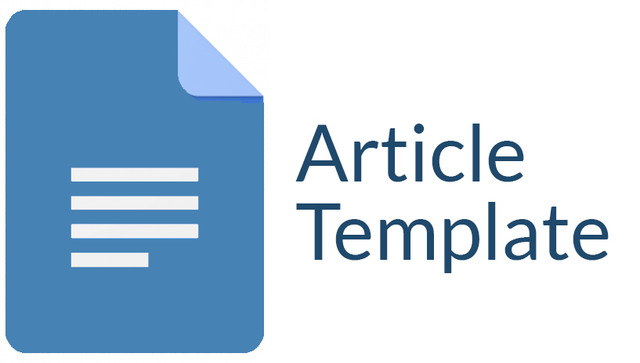Nurita nilasari bunga kharisma RESIKO PERSALINAN KALA I FASE AKTIF MEMANJANG TERHADAP KEJADIAN ASFIKSIA PADA BAYI BARU LAHIR DI RUMAH SAKIT MUHAMMADIYAH SITI KHODIJAH KABUPATEN KEDIRI
DOI:
https://doi.org/10.29407/judika.v2i2.12630Keywords:
Labor, Kala Active Phase I, and AsphyxiaAbstract
The research was based on the high risk of the active phase of labor first stage extends to the incidence of asphyxia in newborns at Muhammadiyah Hospital Siti Khodijah Kediri regency in 2017. The research method used in analytical comparison with the case-control approach. This study aims to identify and analyze the risk of first stage labor and lengthening the active phase of asphyxia. A result that may result from the high incidence of birth asphyxia caused by lengthening the active phase of the first stage is the high maternal mortality rate (MMR) and infant mortality rate (IMR). With a population of 56 asphyxiated newborn (cases) and 56 normal newborns (controls) at the Muhammadiyah Hospital Siti Khodijah Kediri in 2017 that totaled 112 babies. Large sample of 56 asphyxiated newborns (cases) and 56 normal newborns (controls) samples taken by sampling saturated samples. How to measure a variable by using a sheet of data collectors. The value of each subject is collected from data collection sheets are summed in the form of numbers and percentages. Based on the data processing is known that maternal active phase with the first stage extends memili 0,92 greater risk of having infant with birth asphyxia compared to mother with active phase I stage of labor is not lengthened. By calculating the value of Oods Ratio (OR) and 95% CI 0,4-1,9.
Downloads
References
:Riene Cipta.
Bagian Obstetri dan Ginekologi Fakultas Kedokteran. (1984). Obstertri patologi.
Bandung :Elstar Offset.
Cunningham, F. (2006). Obstetri William vol. 1. Jakarta: EGC
DepKesh R.I. (2007). Asuhan Persalinan Normal Revisi 2007. Jakarta: JHPIEGO
DepKesh R.I. (2006). Buku Acuan Pelayanan Kesehatan Maternal dan Neonatal.
Jakarta: Yayasan Bina Pustaka Sarwono Prawirohardjo.
Machfoedz, I. (2009). Metodologi Penelitian Bidang Kesehatan, Keperawatan,
Kebidanan, dan Kedokteran. Yogyakarta :Fitramaya.
Manuaba, I. (1998). Ilmu Kebidanan Penyakit Kandungan dan Keluarga
Berencana untuk Pendidikan Bidan. Jakarta: EGC.
Mochtar, R. (1998). Sinopsis Obstetri Jilid 1 Edisi 2. Jakarta: EGC.
Notoadmojo, S .(2003) .Ilmu Kesehatan Masyarakat Prinsip – Prinsip Dasar .
Jakarta :Rineke Cipta.
Nursalam, (2007). Konsep dan penerapan metodologi penelitian ilmu keperawatan
.Jakarta :Salemba Medika.
Prawirohardjo, S. (2006). Ilmu Kebidanan. Jakarta: Yayasan Bina Pustaka Sarwono
Prawirohardjo
Riyanto, A. (2009). Pengelolahan Dan Analisis Data Kesehatan.Yogyakarta: Muha
Medika.
Sastroasmoro, S. (1995). Dasar-Dasar metodologi Penelitian Klinis. Jakarta:
Binarupa Aksara
Varney, H. (2008). Buku Ajar Asuhan Kebidanan Volume 2 Edisi 4.Jakarta: EGC
DinKesh Jatim. (2010). Angka Kematian Bayi Jawa Timur.
http://jatim.vivanews.com/news/read/132184_angka_kematian_bayi_di_jatim
_turun, Diakses tanggal 20 Maret 2018.
Sarimawar, D. (2003). Data Angka Kematian Bayi.
http://jatimdigilib.litbang.depkesh.go.id/go.php?id=JKPKBPPK-gdl-res2003-sarimawar-881-neonatal,
Diakses tanggal 20 Maret 2018.
Widjanarko. (2009). Persalinan Kala I.
http://creasoft.wordpress.com/2009/04/20/persalinan-kala-1/. Diakses tanggal
20 Maret 2018.
Zikzik. (2009). Penanganan Persalinan Abnormal.
http://obfkumj.blogspot.com/2009/07/penanganan-persalinan-abnormal.html.
Diakses tanggal 20 Maret 2018.
Downloads
Published
Issue
Section
License
Authors who publish with this journal agree to the following terms:
- Copyright on any article is retained by the author(s).
- The author grants the journal, right of first publication with the work simultaneously licensed under a Creative Commons Attribution License that allows others to share the work with an acknowledgment of the work’s authorship and initial publication in this journal.
- Authors are able to enter into separate, additional contractual arrangements for the non-exclusive distribution of the journal’s published version of the work (e.g., post it to an institutional repository or publish it in a book), with an acknowledgment of its initial publication in this journal.
- Authors are permitted and encouraged to post their work online (e.g., in institutional repositories or on their website) prior to and during the submission process, as it can lead to productive exchanges, as well as earlier and greater citation of published work.
- The article and any associated published material is distributed under the Creative Commons Attribution-ShareAlike 4.0 International License













